Batmobile DIY
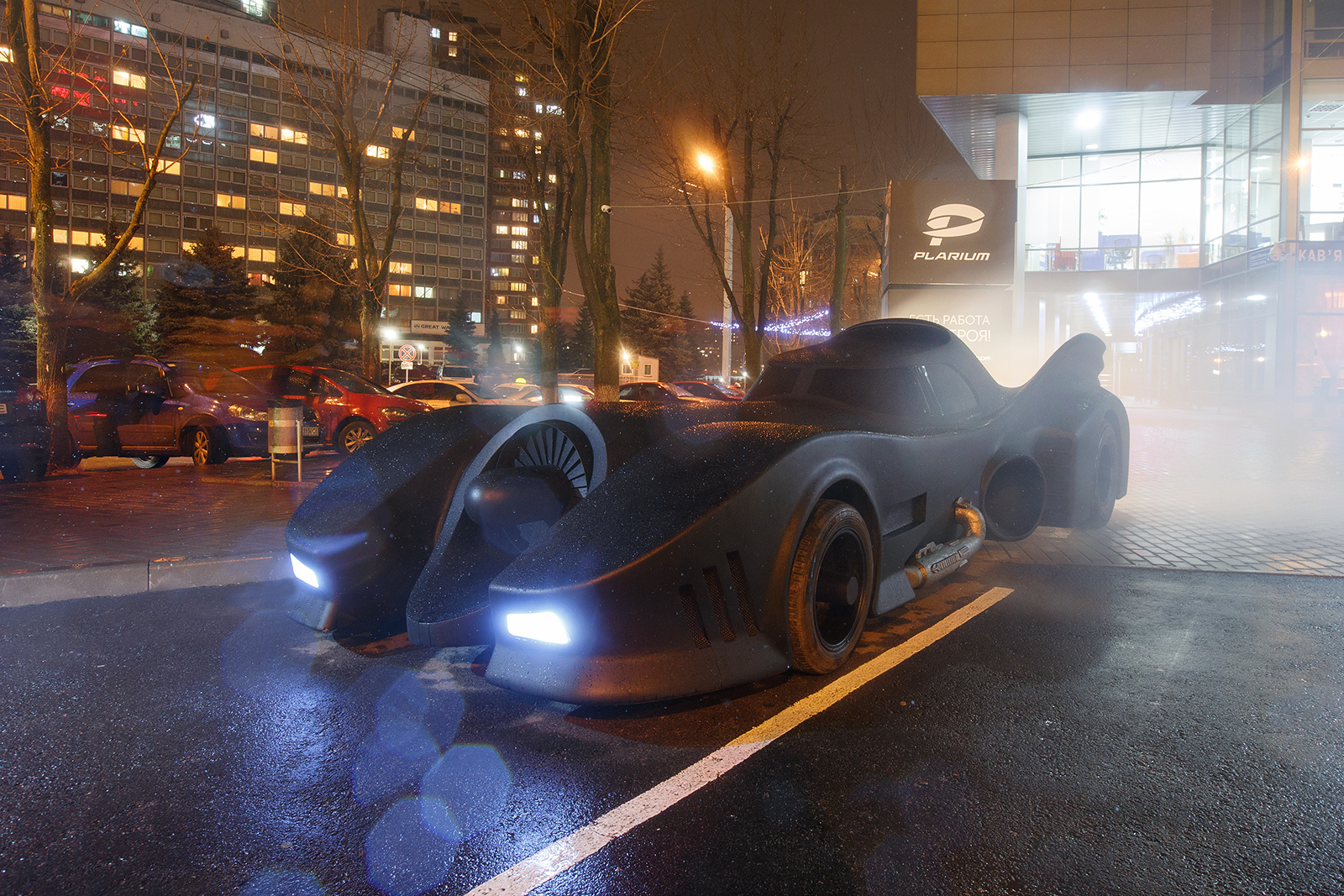
In order to get the Batmobile as close as possible to the original, we created a 3D model of the car, laid out its parts in 20 cm steps, printed patterns and cut out the skeleton that follows the contours of the car from the movie “Batman” by Tim Burton.
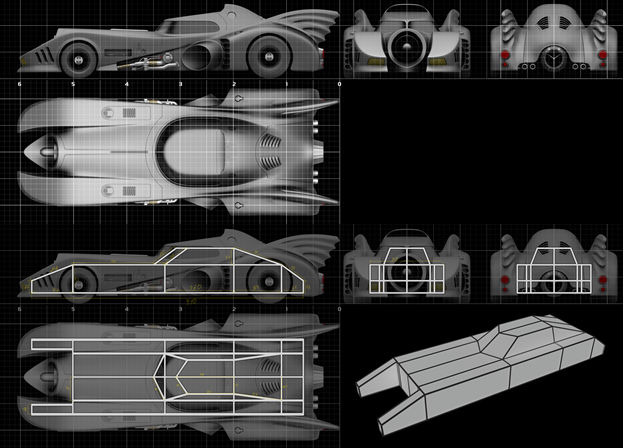
OSB plates 10 mm thick were used as material. Their main advantages are high moisture resistance, durability and low weight. At the same time, the cost is significantly lower than MDF.
')
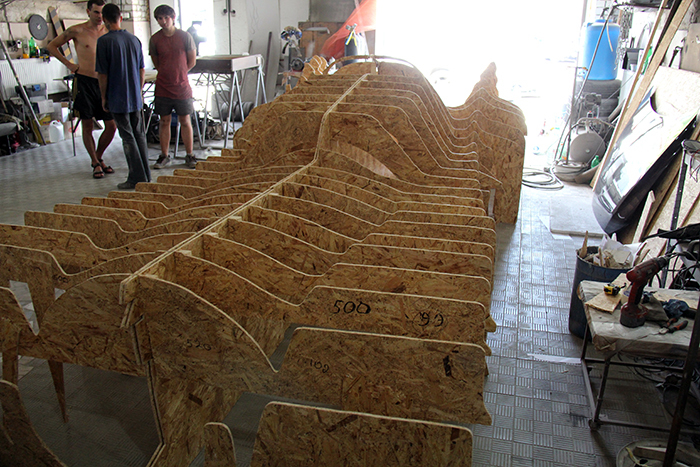
Batmobile dimensions as close as possible to the original - 6.5 x 2.5 meters. Working with such a bulky design is hard, so I had to divide it into 3 parts. For each frame was made of metal pipes, which is fixed with screws. After that, each part was filled with increased-strength polyurethane foam.
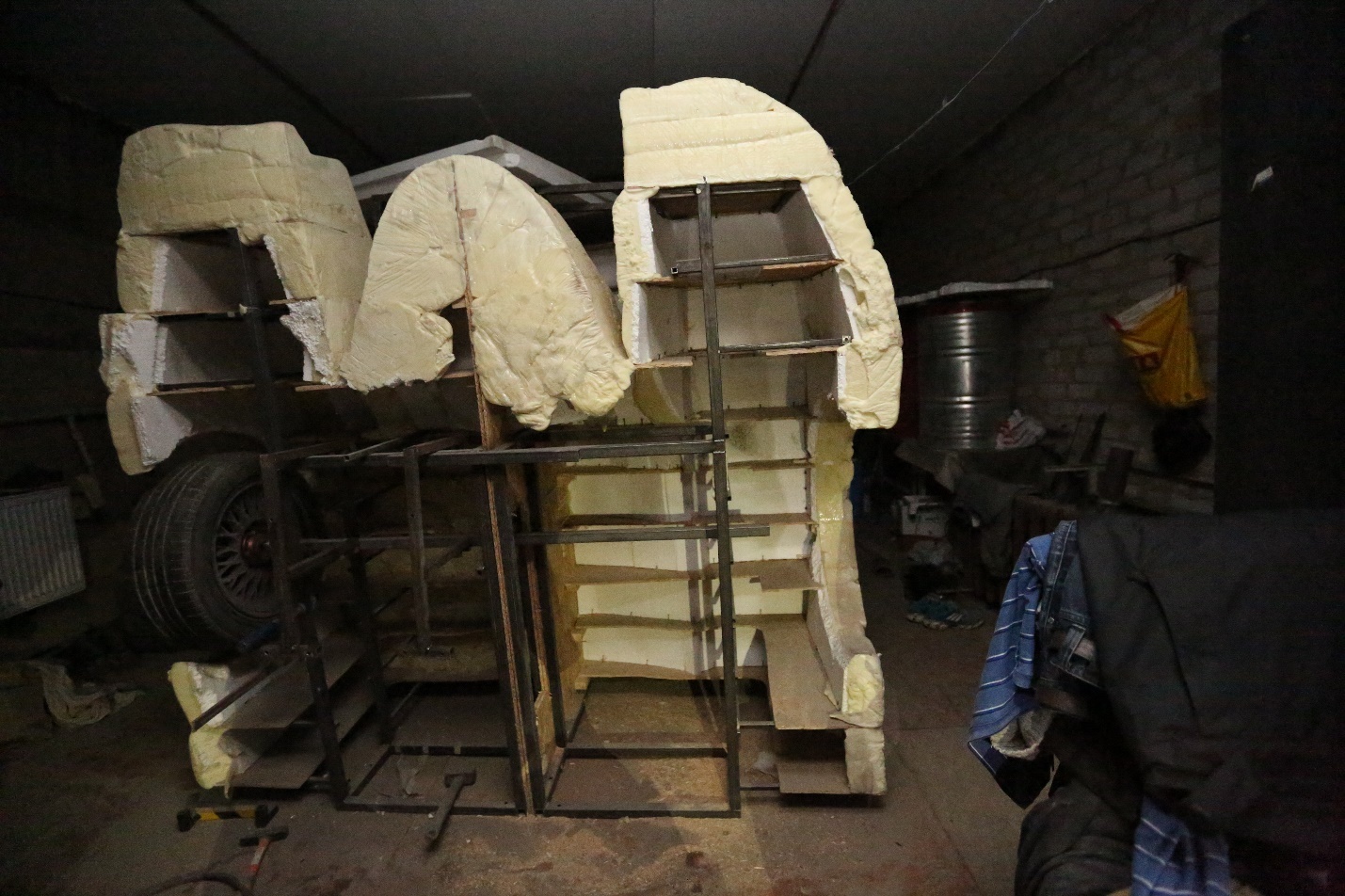
In total, 60 two-meter pipes with a thickness of 2 mm were used with parameters 25x25, 30x30 and 40x40 mm. This is enough to sustain 2000 liters of foam and the additional possible load on the car. For example, a few people sitting on it.
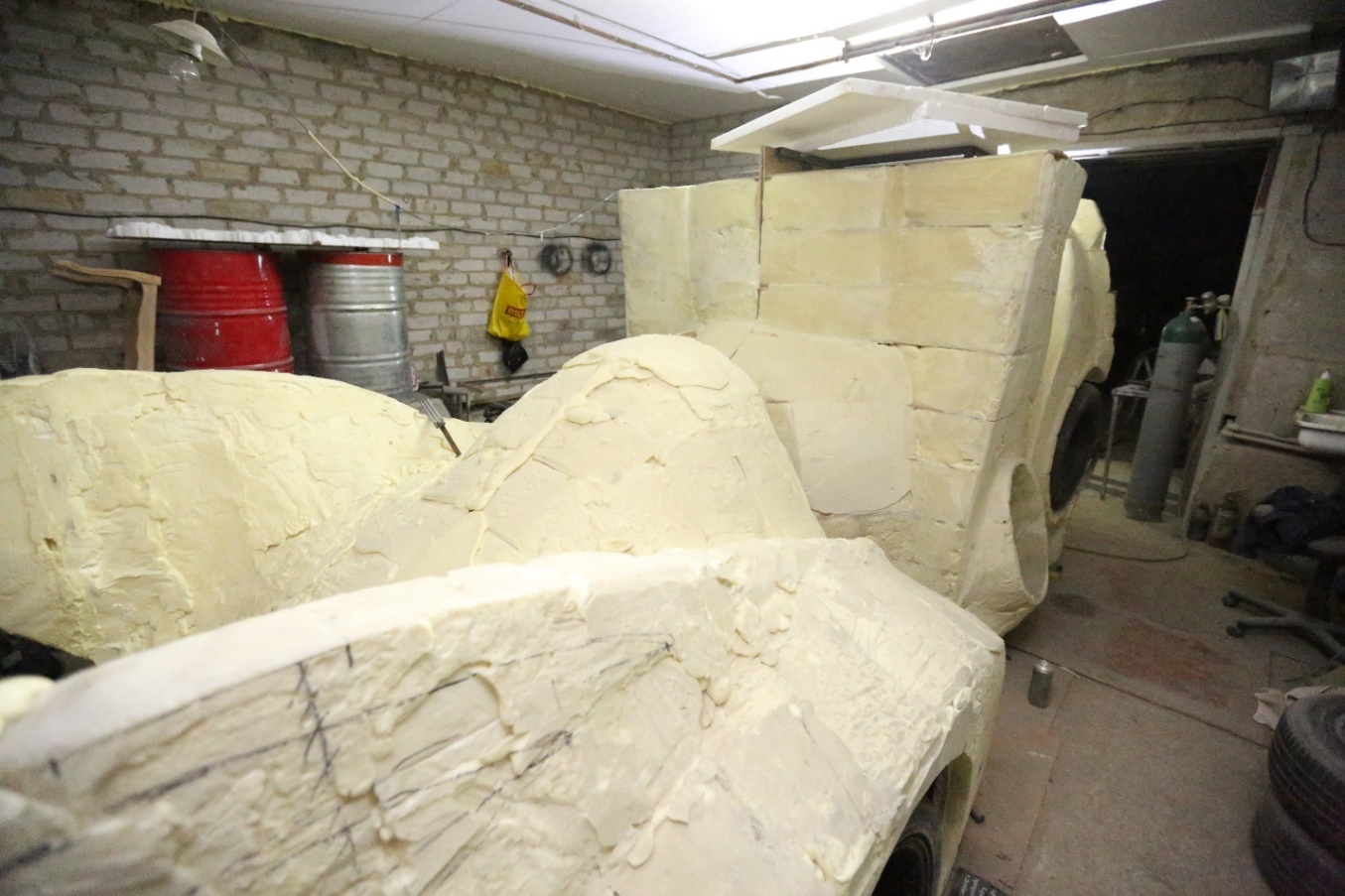
When all the parts of the body were connected, and their docking sites were filled with foam, the longest process in the creation of the Batmobile began - sanding the foam. To finalize the body and all the additional details took 4 months. The problem was the high density of the foam - each layer removed was worth a lot of effort. If you cleaned more than necessary, you had to re-fill this area and polish it again.
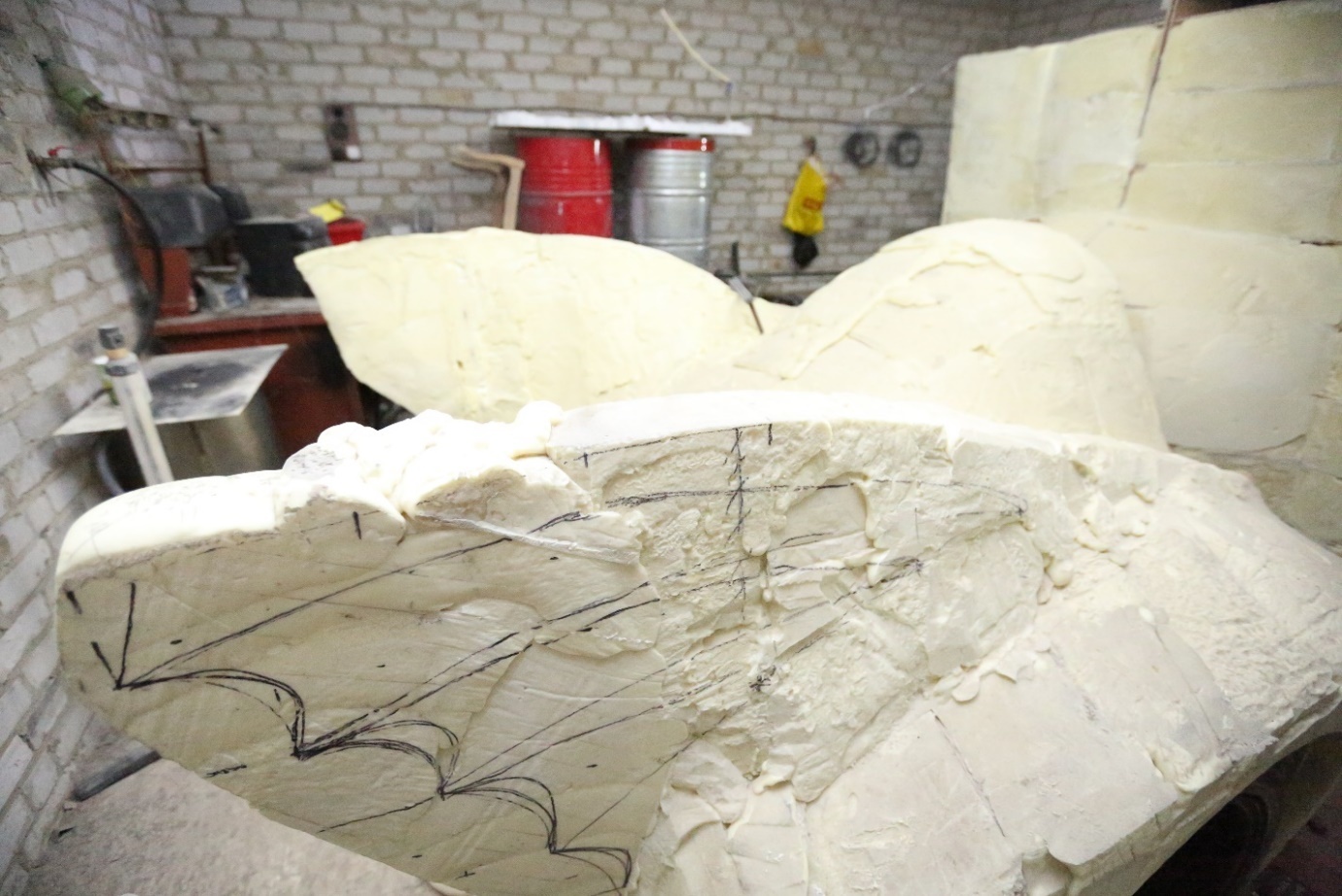
Rough grinding was performed with a belt grinder. For the final processing they used a metal grater, made to order (the principle of operation is similar to a grater for foam plastic). And the foam from the bottom of the machine was cut with an electric saw: 10 minutes - and a perfectly flat surface is ready.
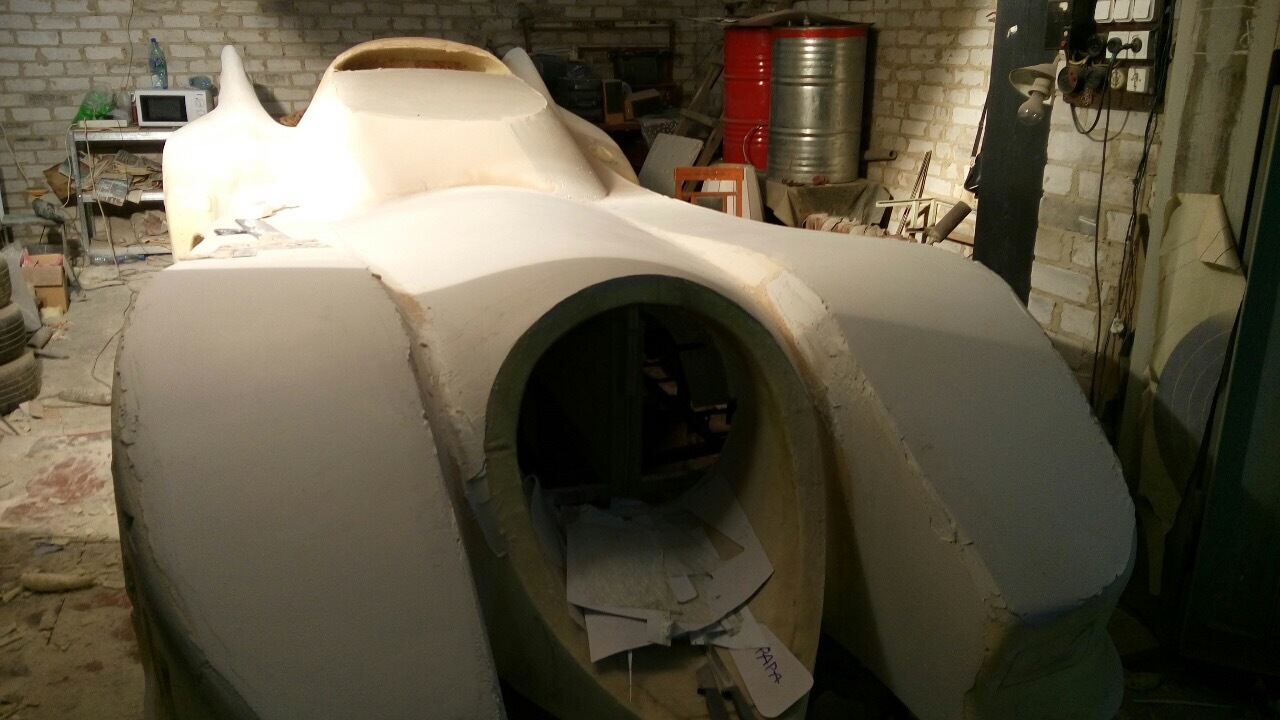
Then spent preparatory puttying. Body covered with fiberglass and soaked with polyester resin with the addition of hardener. The resin was applied with a brush (due to the uneven surface), and then rolled with a roller made of paronite. Roller treatment removes air and excess resin, “breaks” glass mat fibers into a homogeneous mass and makes the sheet joints invisible. In this way, we have achieved a flat, thin surface that follows the shape of the body, with smooth transitions and without steps.
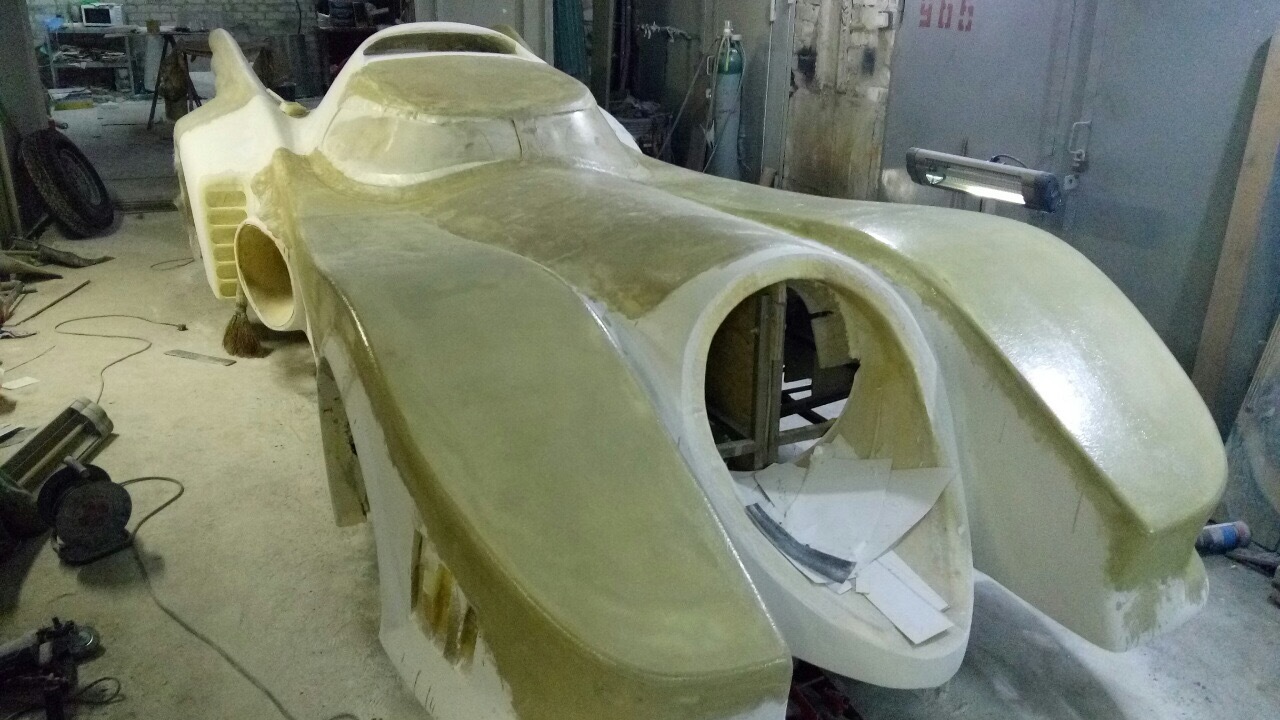
Some parts were created separately and attached to the car in the process. For example, the upper part of the cab, wheel covers and front turbine. Patterns and forms for them were made by hand.

The wheels are attached to the frame and rotate freely, but not rotated. Since the Batmobile is not designed for travel, the implementation of turns was impractical, especially if we consider the necessary expenditure of funds and time.
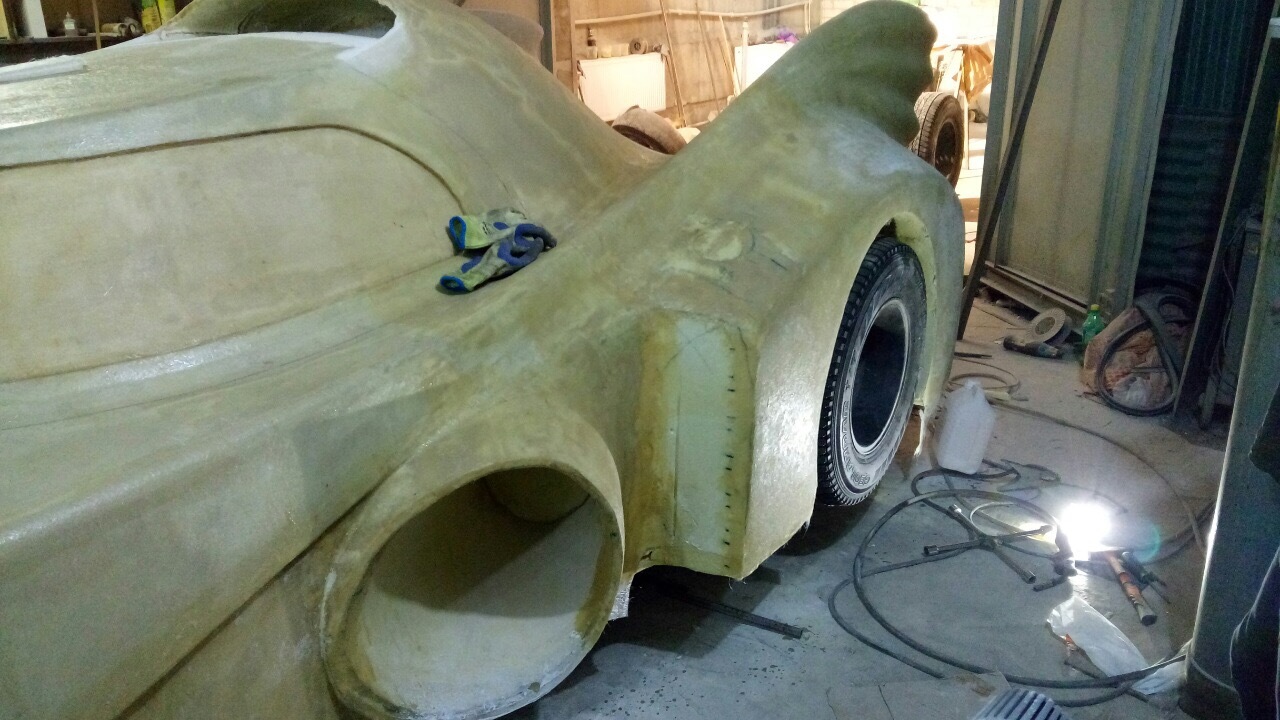
Headlights and brake lights are made of Plexiglas, LED blocks and aluminum reflectors. Heated plexiglass was applied to the car and gave it the shape of the corresponding section. The brake lights are covered with a red car film for tuning in 2 layers.
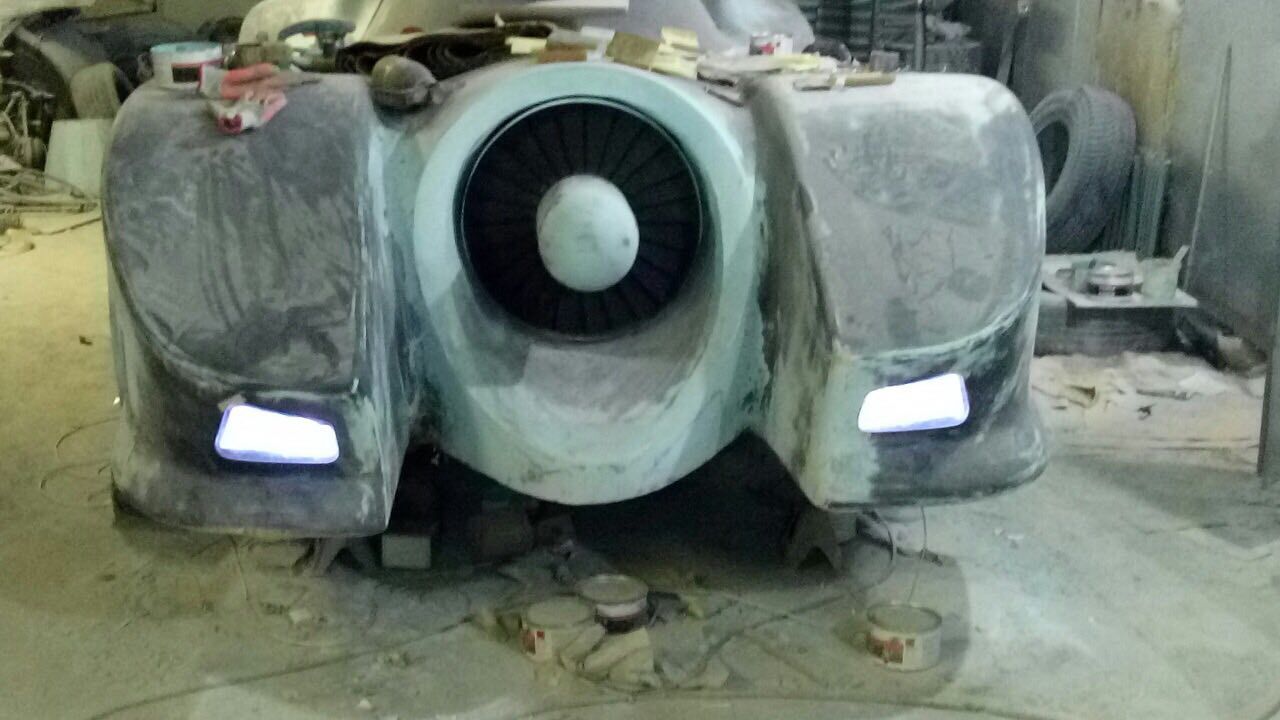
The last stage - finishing puttying, applying a primer and painting. For the body used polyurethane paint with the addition of black crumbs in the ratio of 6: 2. The resulting mixture does not wash for a long time, is easy to clean and, moreover, is resistant to chemical attack.
To imitate glass, we used a glossy paint - automotive paint on a polyurethane base with the addition of acrylic. It is the contrast of gloss with a matte body that creates the effect of tinted glass.
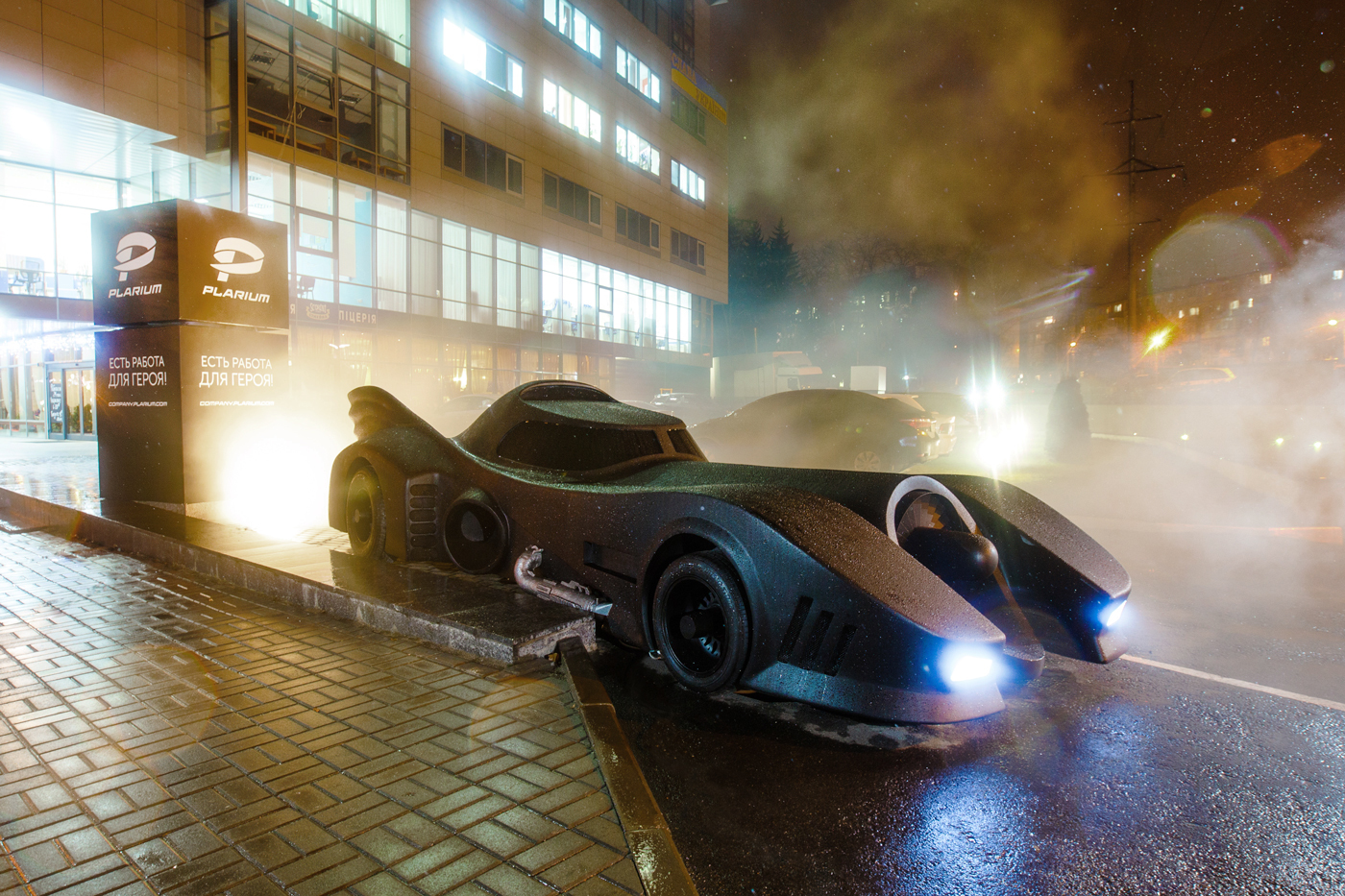
Why Batmobile?
Plarium employees have many fans of games and comics. We decided to support their passion by doing something truly ambitious and inspiring. After all, Batman - a superhero without superpowers. He achieved everything with the help of intelligence, willpower and hard work on himself. Batmobile recalls that each of us can become a hero.
Source: https://habr.com/ru/post/369311/
All Articles